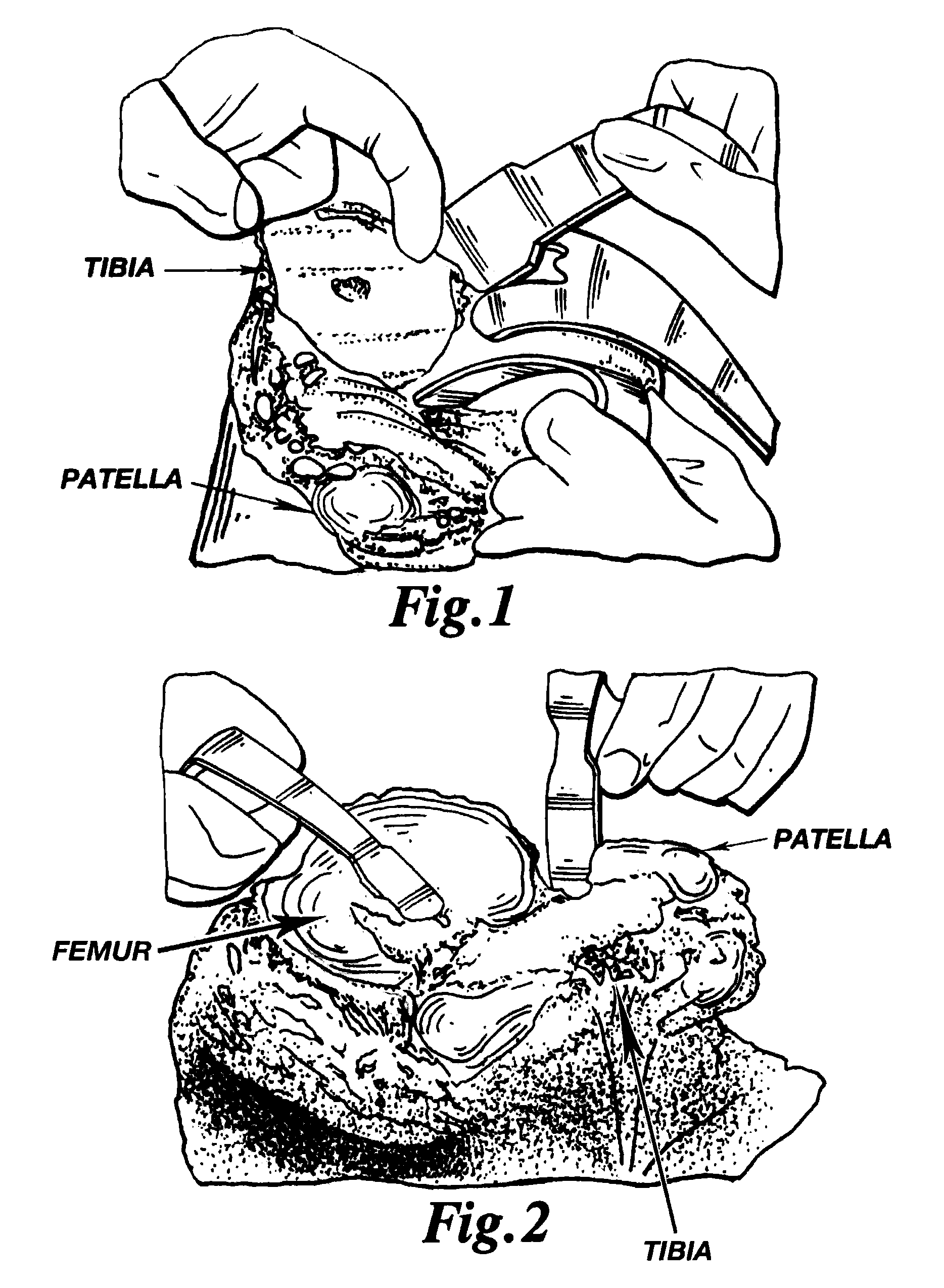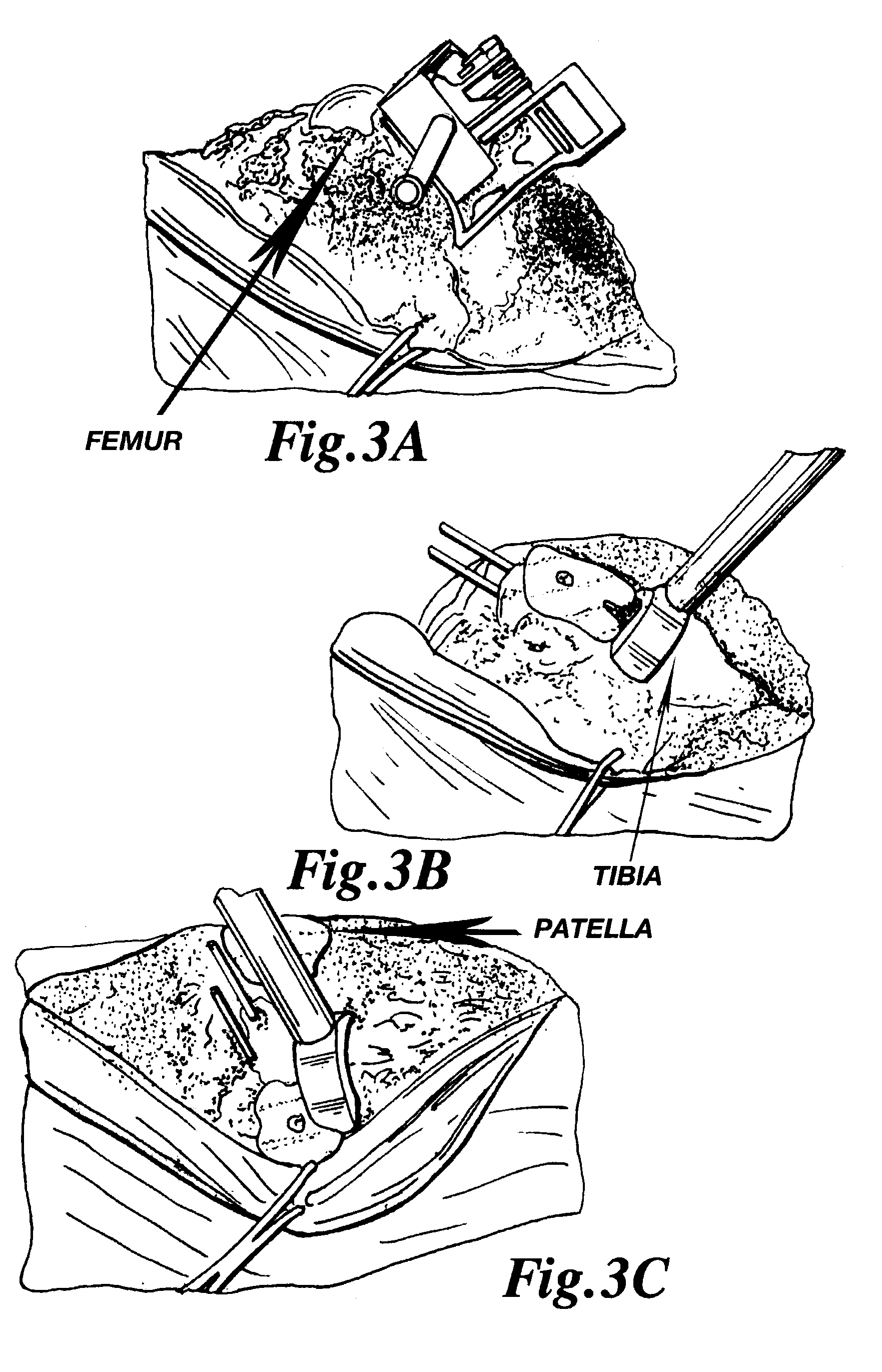Methods and apparatus for improved cutting tools for resection
a cutting tool and resection technology, applied in the field of bone resection, can solve the problems of inability or high resistance of the disclosed tool embodiment, and achieve the effect of facilitating intraoperative and postoperative efficacy and ease of us
- Summary
- Abstract
- Description
- Claims
- Application Information
AI Technical Summary
Benefits of technology
Problems solved by technology
Method used
Image
Examples
Embodiment Construction
[0022]It should be noted that, in many of the figures, the cut surface created by the cutting tool in accordance with the techniques of the present invention are shown as having already been completed for the sake of clarity. Similarly, the bones may be shown as being transparent or translucent for the sake of clarity. The guides / pins, cutting tool, bones, and other items disclosed are may be similarly represented for the sake of clarity or brevity
FIGS. 1 through 4
[0023]FIGS. 1 and 2 show conventional surgical exposures and instrumentation being utilized. FIG. 4 shows a reduced incision currently utilized in performing the current state of the art in ‘minimally invasive’ Unicondylar Knee Replacement.
FIGS. 29-30 and 93-98
[0024]The embodiments of the present invention are shown for femoral resection. For the sake of clarity, it should be noted that any combination of the forms of the present invention disclosed herein may be modified or combined to form constructs not specifically dis...
PUM
 Login to View More
Login to View More Abstract
Description
Claims
Application Information
 Login to View More
Login to View More - R&D
- Intellectual Property
- Life Sciences
- Materials
- Tech Scout
- Unparalleled Data Quality
- Higher Quality Content
- 60% Fewer Hallucinations
Browse by: Latest US Patents, China's latest patents, Technical Efficacy Thesaurus, Application Domain, Technology Topic, Popular Technical Reports.
© 2025 PatSnap. All rights reserved.Legal|Privacy policy|Modern Slavery Act Transparency Statement|Sitemap|About US| Contact US: help@patsnap.com



